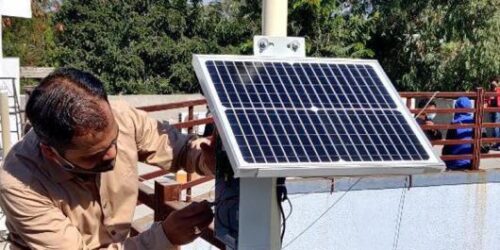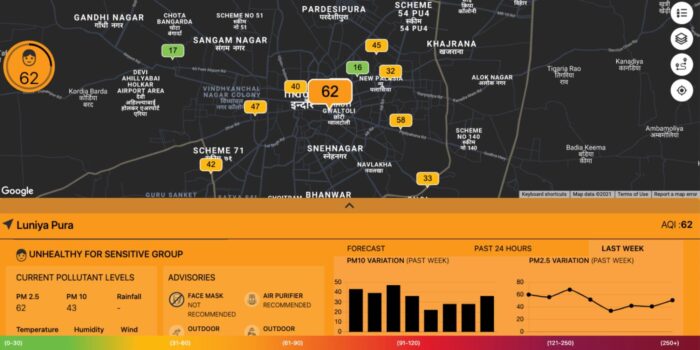How Community Partners are the Key to Improving Air Quality and Mitigating Climate Change

This blog was originally published on Climatelinks.
Across the globe, people are struggling to improve air quality, but the sources of pollution that cause the most harm are a moving target. They can differ by location, time of year, and time of day. Frequent exposure to air pollution causes many health problems for community members, and children are at the most risk. Furthermore, the Institute for Advanced Sustainability Studies shows that in order to successfully address climate change, a reduction in air pollutants like black carbon is necessary. One solution to improve air quality and promote positive climate outcomes is to uplift the voices and increase awareness of those who live with the sources of pollution.
I get goosebumps when I think [of the] damage caused by the present air condition.
Pooja Raghuvanshi, Indore Clean Air Guide
The USAID-funded Building Healthy Cities (BHC) project is working in Indore, India to increase community participation in air pollution mitigation. In partnership with Indore Smart City Development Limited, Indore School of Social Work, and SkyMet, BHC installed 20 low-cost air quality sensors across Indore to collect quantitative data. BHC has also trained and continues to support 20 local Clean Air Guides (CAGs), who work within their communities to raise awareness and develop solutions for the air quality issues they face. The air sensors send CAGs real-time data on the quality of the air in their location.
In the long run, attempts to improve air quality reward humanity by bettering wellbeing and health, reducing the damages to health, and boosting environmental productivity.
Isha Parulkar, Indore Clean Air Guide
Vani Joshi is the Clean Air Guide for the air sensor placed at the Gangwal Bus Stand, a commercial area with heavy traffic. Since becoming a CAG, she has learned about the composition of air pollutants and that dust, which she encounters daily, contributes to air pollution. With data from her sensor, Vani is able to “compare the data from days with more traffic to days when there was less traffic and show community members how stark the difference is.” Vani said, “though [community members] were not able to understand the technical terms, they still got the idea that their practices directly impact the air quality in their area.”

Along with analyzing and sharing the data with community members, the Clean Air Guides are developing creative solutions to mitigate air pollution. Deepak Kanhare, a CAG in Palasia Square, successfully encouraged his friends and community members to ride bicycles after concluding that vehicle traffic is the major source of air pollution in his locality. Jugal Kishore Chouhan lives near a cremation ground in Luniapura, which contributes significantly to air pollution, and is working with the administrators of the crematorium to implement safer practices for burning bodies. After sharing findings that a pulse processing factory is emitting pollution, CAG Pooja Raghuvanshi is working with her self-help group and the owners of the factory to decrease emissions. Finally, Isha Parulkar distributed 25 free tree saplings to community members to help clean the air in Reti Mandi Square.
Clean air for me and my community means being able to breathe freely while knowing that the air that we are breathing is safe.
Vani Joshi, Indore Clean Air Guide
The examples described above represent a microcosm of the work happening in Indore to mitigate air pollution and greenhouse gas emissions. Lessons learned from cleaning the air in Indore may be adopted around the world, resulting in healthier people and a healthier planet. Localized air quality improvements will lead to a healthier and more vibrant community on a small-scale, and the combined impact of each small-scale community effort will have a significant global impact on increased air quality and a decreased rate of climate change.

